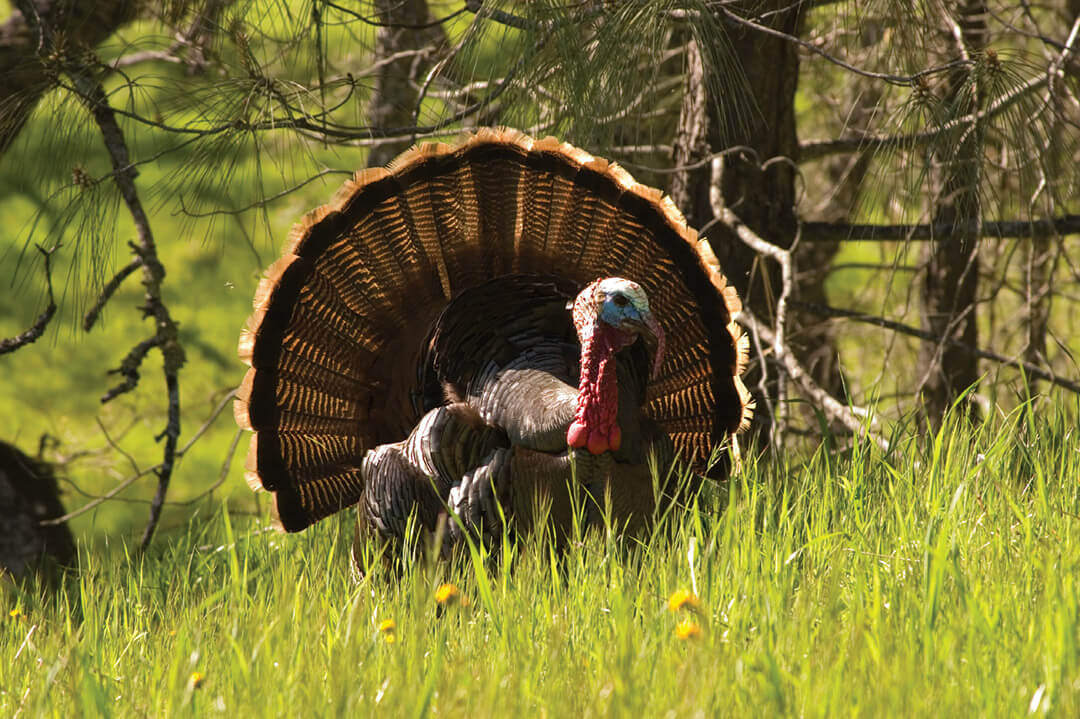Leaving Lead Behind

Hunting and angling are popular modes of outdoor recreation, and important drivers of wildlife conservation action and funding that greatly benefit wildlife and habitats. On the other hand, the use of lead shot and lead tackle gear can have severe consequences for wildlife. Birds are particularly vulnerable to the effects of lead in the environment. For example, lead poisoning linked to fishing tackle is the leading cause of mortality in adult common loons (4) and the presence of spent lead shot was a contributing factor in the decline of endangered species such as the California condor (1).
What is lead and why is it harmful? Lead is a non-specific poison affecting all body systems and is toxic to both humans and wildlife. When a lead bullet or tackle is used, it may contaminate fish or carrion that is ingested by wildlife. The result is lead poisoning which is known to result in behavioral changes, impaired immune responses, decreased reproductive success along with an increased risk of predation, starvation and death (3).
Numerous studies have shown that lead poisoning has negatively impacted avian populations such as bobwhite, quail, turkeys, doves, hawks, owls, and eagles, along with other wildlife species (9). Lead poisoning in birds results from the ingestion of shot fragments directly (e.g. litter mistaken for seed), feeding on game that was not retrieved, and scavenging on lead-tainted carcasses or other remnants left behind by hunters.
In the 1980s, research confirmed that the accumulation of spent lead shot in the environment was primarily the result of hunting activities. Spent lead shot was a major cause of waterfowl exposure to lead and played a significant role in mortality of waterfowl species (6) resulting in the use of lead bullets for waterfowl hunting was nationally banned in 1991.
While the ban on lead bullets for waterfowl hunting has indeed saved millions of birds since it was enacted, overwhelming evidence continues to point to the dangers of lead for other wildlife species and humans.
Intervening for Wildlife
The most practical way to avoid leaving lead behind in nature where it can contribute to the lead poisoning of wildlife is to opt-out of lead-based tackle and transition from lead ammunition to non-toxic alternatives, for all hunting practices and in all habitats (3). This switch, however, is not always an easy one. Non-toxic alternatives are often more expensive and may not be readily available in all communities. Further complicating the transition is the fact that these alternatives are not always compatible with particular firearms.
The North Carolina Wildlife Resources Commission requires that non-toxic ammunition be used when hunting waterfowl and coots, however, lead bullets are allowed for deer hunting. Voluntary transitions by sportsmen and sportswomen to non-toxic alternatives for all hunting and angling practices can help prevent further harm to avian species and other wildlife (8). To view a list of non-toxic shots approved by the U.S. Fish & Wildlife Service see: http://www.fws.gov/birds/bird-enthusiasts/hunting/nontoxic.php\
By staying informed about the dangers of lead in the environment and making the switch to non-toxic ammunition and fishing tackle, you are actively helping to protect, conserve and restore wildlife and habitats by taking immediate, meaningful action that supports healthy and vibrant wildlife populations near home and afar.
By Madison Ohmen, Conservation Coordinator
Sources:
(1) U.S. Fish and Wildlife Service (2021) California Condor Recovery Program. Retrieved at: https://www.fws.gov/cno/es/calcondor/condor.cfm
(2) Cirino, E. (2015) New Federal Lead Rule Will Have Hunters and Fishers Looking to Safer Alternatives. Retrieved at: https://www.audubon.org/news/new-federal-lead-rule-will-have-hunters-and-fishers-looking-safer-alternatives
(3) Fishera, I., Paina, D., and Thomas, V. (2006, June 5) A review of lead poisoning from ammunition sources in terrestrial birds. Retrieved at: https://citeseerx.ist.psu.edu/viewdoc/download?doi=10.1.1.737.4920&rep=rep1&type=pdf
(4) Grade, T., Pokras, M., Laflamme, E., and Vogel, H. (2017, September 25) Population-level effects of lead fishing tackle on common loons. Retrieved at: https://wildlife.onlinelibrary.wiley.com/doi/full/10.1002/jwmg.21348
(5) Gremise, F., Krone, O., Thamm, M., Kiessling, F., Tolba, R., Rieger, S., and Gremse, C. (2014, July 16) Performance of Lead-Free versus Lead-Based Hunting Ammunition in Ballistic Soap. Retrieved at: https://www.ncbi.nlm.nih.gov/pmc/articles/PMC4100882/
(6) Kelly, D. (2011) The Effects of Tillage on Shot Concentrations in Publicly Managed Mourning Dove Fields in North Carolina. Retrieved at: https://repository.lib.ncsu.edu/bitstream/handle/1840.16/7123/etd.pdf?sequence=2&isAllowed=y
(7) National Wildlife Federation. Lead-Free Landscapes. Retrieved at: https://www.nwf.org/leadfreelandscapes
(8) U.S. Fish and Wildlife Service (2020) NONTOXIC SHOT REGULATIONS FOR HUNTING WATERFOWL AND COOTS IN THE U.S. Retrieved at: https://www.fws.gov/birds/bird-enthusiasts/hunting/nontoxic.php
(9) Youngdyke, D. (2019) Letting Go of Lead. Retrieved at: https://www.nwf.org/Home/Magazines/National-Wildlife/2020/Dec-Jan/Conservation/Lead

